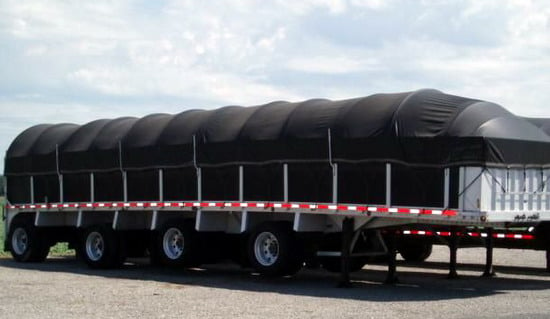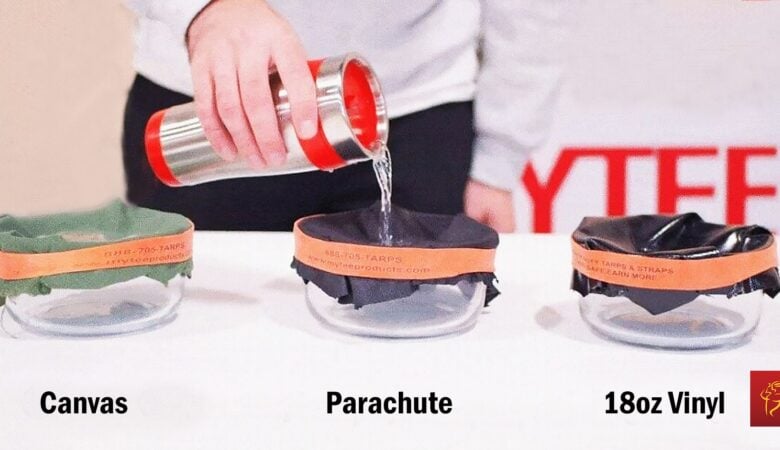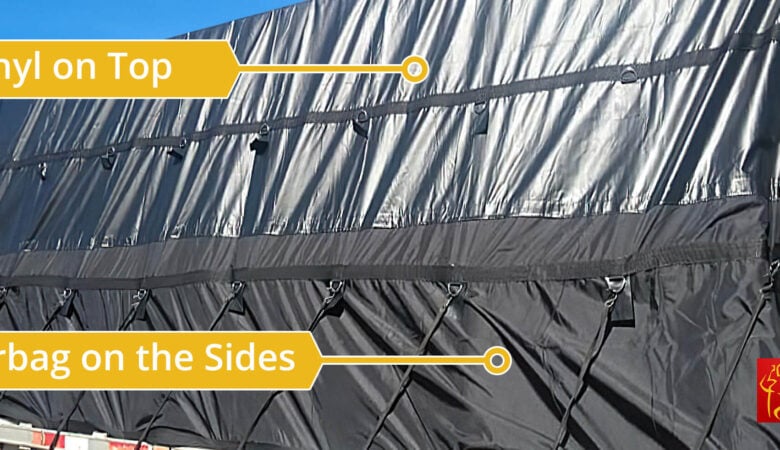With winter fast approaching, you may find yourself using your side kit more frequently. Winter weather has a way of doing that. A good side kit with the right tarps may be just what a shipper is looking for before it releases that load you have agreed to carry. As with anything else you might purchase from Mytee Products, we always recommend taking good care of your side kit and tarps by paying attention to routine maintenance.
Below are some tips for maintaining side kit equipment. Note that side kits come in standard sizes and configurations. Make sure you are using the right parts with your kit. Also make sure you’re using the right kinds of tarps. Remember that a tarp design for a site kit is a fitted tarp. It should fit tightly over the frame with no leftover material to flap in the wind.

Check Rails for Abrasion Points
The rails that form the top of a side kit carry most of the weight of the tarp on top. They also provide plenty of contact points that could cause tarp damage. We recommend routinely inspecting rails to make sure there are no sharp points or areas of abrasion. Such hazards are pretty common in flatbed trucking.
Perhaps you are not extremely careful about laying rails down on the bed of your trailer during disassembly. You may toss your rails into a pile as you’re working. That’s fine, except that it’s a good way to damage them. All we are saying is that you should routinely inspect side kit rails in order to preserve your tarps.
Replace Damaged Posts
The posts that came with your side kit should offer you many years of reliable service without issue. But posts wear out like anything else. They can also be damaged by rogue forklifts, shifting cargo, road debris, and a lot of other things. So routinely inspect them along with your rails. Any that are damaged should be replaced as soon as possible.
Posts that are bent might be salvageable as long as the angle is not too severe. But note that the best way to straighten a bent post is by putting it in a vice and applying pressure evenly. If you simply slip a bent post into a trailer housing and yank on it in the opposite direction, you run the risk of harming its integrity.
Inspect Side Kit Tarps
As previously mentioned, side kit tarps are fitted tarps. Every time you deploy one you should be checking to make sure that the fit is good and tight. Any loose fabric is a sign that the tarp might be wearing out. Of course, you should also be looking for rips and tears at the same time.
If you notice an area of the tarp that seems to be wearing out at a particular junction where it makes contact with rails or posts, it’s a good idea to deploy a few edge protectors at that particular area until you can figure out exactly what’s causing the problem. It may take you an extra minute or two but inserting edge protectors could save you the cost of buying a new tarp.
In closing, keep in mind that severe winter weather can do a number on your side kit. Just be extra vigilant during the winter months to do routine inspections and address any minor maintenance issues. Handling minor issues right away will keep them from becoming significant issues later on. With all that said, feel free to browse our inventory of side kit tarps in preparation for the coming winter.










